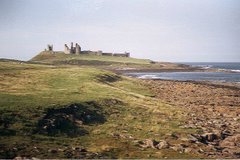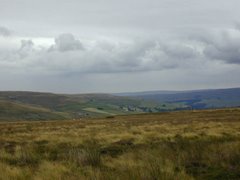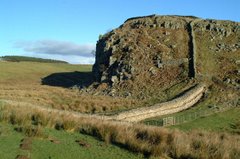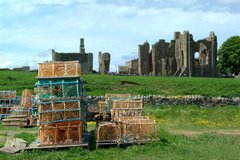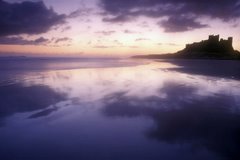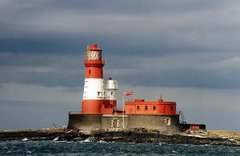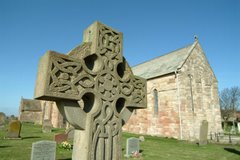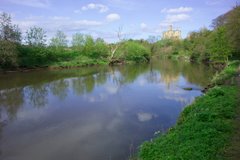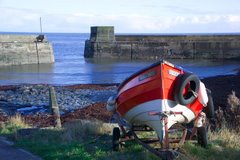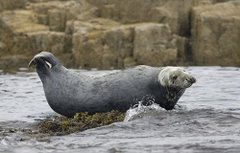Alnwick - the lionheart of Northumbria
Alnwick Castle itself, the second largest inhabited castle in Britain, has been the seat of the Earls and Dukes of Northumberland since 1309. The present Duke and Duchess are Ralph and Jane Percy. The Duchess was the main driving force behind the Alnwick Garden and still has a very much hands on role. The castle overlooks beautiful grass pastures which many Alnwick locals use for recreation. The castle acted as Hogwarts School of Witchcraft and Wizardry in the recent movies Harry Potter and the Philosopher's Stone and Harry Potter and the Chamber of Secrets. It was also the venue of the first Blackadder series with Rowan Atkinson. Every Shrove Tuesday there is a big football match on the pastures between the town's two parishes of St. Michael's and St. Paul's. Traditionally the Duke throws the ball from the castle barbican before it is marched down the Peth to the sound of pipe music. Most people who have lived in Alnwick all their life are uncertain of the rules of the match, if there even is any! At the end of the match the ball is thrown into the River Aln and the person who retrieves it gets to keep it as a momento.
Hulne Park is another part of the Northumberland Estate. The enclosed park, mainly conifer woodland and rolling moorland, is the ideal venue for walking and offers many scenic views of the coast to the east and snow topped Cheviot Hills to the north. Hulne Priory and Brizlee Tower are also located in the park.
In the town centre you'll find Barter Books, the largest second hand bookshop in the country. The shop is an Aladdin's cave housed in the old station buildings opposite the Tenantry Column (referred to as the Lion Column by locals). As you enter the shop you are greeted by friendly staff and the aroma of freshly brewed coffee and muffins. If you are an avid reader you could easily spend an entire day leafing through the collection, listening to music and relaxing in front of the crackling log fire in the old station waiting room.
Every summer the town hosts the Alnwick International Music Festival and Alnwick Fair. These events are free of charge and are in the Market Place. The music festival tries to offer fresh entertainment each year and, as the name would indicate, has acts from across the globe. The fair is getting a bit stale - it still seems popular with visitors to the town, but is the ideal excuse for local people to book a holiday and get away for the week!
Article adapted from the Wikipedia online encyclopedia.
How to get to Alnwick:
By road from the south: take the main A1 trunk road from Newcastle upon Tyne. Alnwick is about 35 miles on the left and is clearly sign posted.
By road from the north: Take the main A1 trunck road from Edinburgh and Berwick upon Tweed. Alnwick is about 30 miles south of Berwick on the right and is clearly sign posted.
By rail: The nearest station is Alnmouth for Alnwick. Take Arriva Northumbria bus service 518 into Alnwick. Additionally, the Dreadnought Coaches operate a Coastal Clipper service during the summer months.
By bus: Arriva Northumbria services 501/505 (weekdays and Saturdays) and Travelsure service 525 (Sundays and public holidays only) run between Newcastle upon Tyne and Berwick upon Tweed and call at Alnwick.
By road from the south: take the main A1 trunk road from Newcastle upon Tyne. Alnwick is about 35 miles on the left and is clearly sign posted.
By road from the north: Take the main A1 trunck road from Edinburgh and Berwick upon Tweed. Alnwick is about 30 miles south of Berwick on the right and is clearly sign posted.
By rail: The nearest station is Alnmouth for Alnwick. Take Arriva Northumbria bus service 518 into Alnwick. Additionally, the Dreadnought Coaches operate a Coastal Clipper service during the summer months.
By bus: Arriva Northumbria services 501/505 (weekdays and Saturdays) and Travelsure service 525 (Sundays and public holidays only) run between Newcastle upon Tyne and Berwick upon Tweed and call at Alnwick.
Map of area: CLICK HERE








